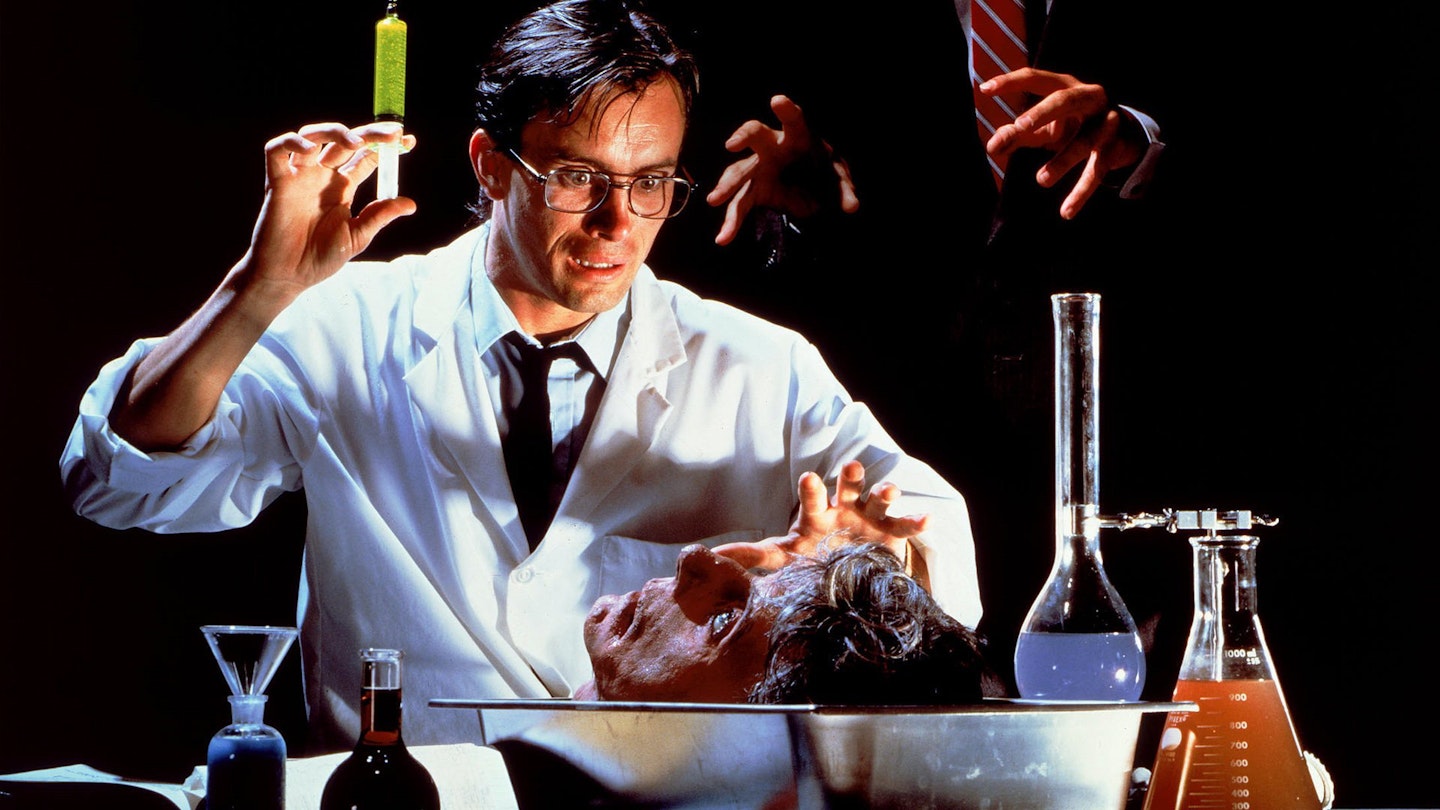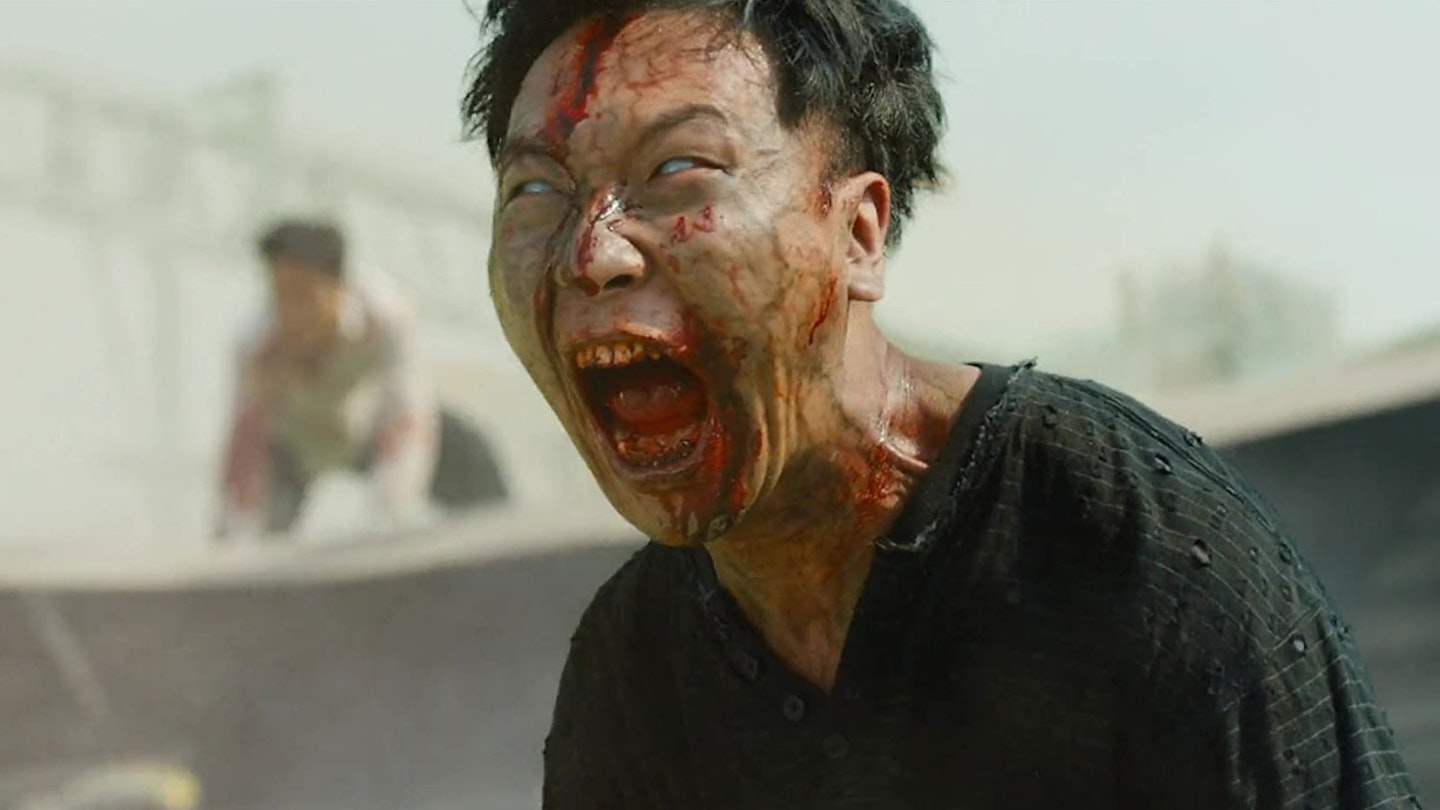Stuart Gordon has never exactly been a stranger to controversy. Having already had obscenity charges levelled at him after a university production of Peter Pan (Tinkerbell was gay, Peter a hippy and the trip to Never Never Land was on LSD), his co-founding of Chicago's infamous Organic Theater soon followed. All before he'd even picked up a camera. No surprise, then, that his first foray into filmmaking can hardly be described as understated.
Based on H.P. Lovecraft's 1921-22 pulp series Herbert West: Re-Animator which the author always actually looked down on Gordon originally produced a half-hour television script shaped around the first two instalments, only for producer Brian Yuzna (who directed sequel Bride Of Re-Animator in 1990 and has Beyond Re-Animator in pre-production) to be so intrigued that he insisted on him adapting all six into a feature.
And so, after Gordon spent weeks of research in morgues ("You never forget the smell, I can assure you") and forensic labs, the modern-day spin on the Frankenstein theme was born.
Shot in the same studios as The Terminator (1984), immediately after the sci-fi epic had wrapped, the two films actually have much in common. As well as sharing much of the same crew, Re-Animator features a cameo by Cameron's father (the hospital patient with a bandaged head), and boasts Arnie's body double, Peter Kent, as the first corpse to be revived (the similarity both physically and in acting style is uncanny, by the way). In fact, so excited was Kent about the project that Schwarzenegger himself requested a screening, and subsequently loved the film so much that he personally recommended Gordon as director for Fortress which eventually starred Christopher Lambert when Arnie bailed.
Not surprisingly, when the finished version was shown to the ratings board, with a request for an R certificate, the result was a barely stifled guffaw. But, faced with the choice of making the necessary cuts, and being left with a 40-minute short, or risking financial calamity by opting for an unrated release, Gordon and Yuzna stood firm, unleashing their uncut masterpiece first at Cannes (where critics went wild) and then at the box office (where the audiences followed suit). Even in its present form, Re-Animator remains a splashy hark back to the glorious 80s love affair with all-things bloody to the point that Gordon was convinced he'd used more fake blood than anyone else in the history of horror... Until, that is, he compared notes with Braindead's Peter Jackson.
Consider also a budget reputed to be barely over $1 million (very much in keeping with second producer Charles Band's school of penny-pinching filmmaking) and the effects are all the more impressive. Although the shoestring budget with which Bret Culpepper (the man behind The Stuff later the same year) had to work with resulted in a number of improvisations being made. Hamburger mince was sometimes used in place of latex, a lack of pubic prosthetics used to cover up naked zombies' genitals meant that Gesundheit's (the crew's nickname for the shotgun-wound-in-the-face member of the undead) penis had to be sprayed black to make it more discrete, and the neon "life juice" was, in fact, flare fluid bought from a local hardware store.
But if there was one person who suffered most from the measly effects budget, it was David Gale. As Herbert West's enemy, Dr. Hill, the actor had to be hit around the head with a "rubber" shovel made from a cheap variant that had set far too hard, and was also forced to wear a hideous wig for the whole shoot to match the hair on his fake head (this was considerably cheaper than reproducing the colour of his real barnet). No wonder the film is now dedicated to his memory.
Of course, no discussion of Re-Animator is complete without mentioning its infamous "head" sequence (Barbara Crampton gets some from a severed one). But while, in creating "The world's first visual pun", Gordon established himself as a hot new talent, others fared less favourably. Gale's wife stormed out of a screening, wailing "David! How could you?" and Crampton (who landed the part when her predecessor's mother read the script and forbade her daughter from playing it) spent the next few years confiscating stacks of smutty stills from excitable fans at horror conventions.
This, after all, is the effect the film has had on audiences worldwide, infecting them with its canny combination of unashamed borrowing (look out for Polanski shots lifted straight from Rosemary's Baby, and a score that may well have had Bernard Herrmann turning in his grave), a simplistic storyline (a hypnotism subplot was eventually cut) and, yet, breathtaking originality. Not least one Jim Belushi, of Chicago, Illinois, who to this day occasionally rings the director in the early hours of the morning, simply to utter his favourite line: "Wessst... You... Basstarrrd!" Hear, hear!




